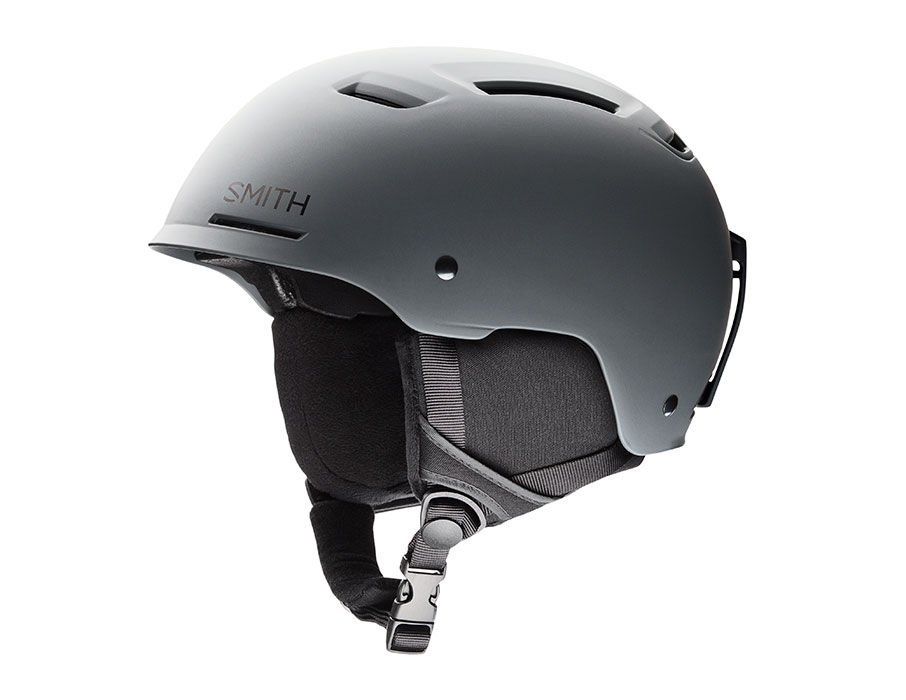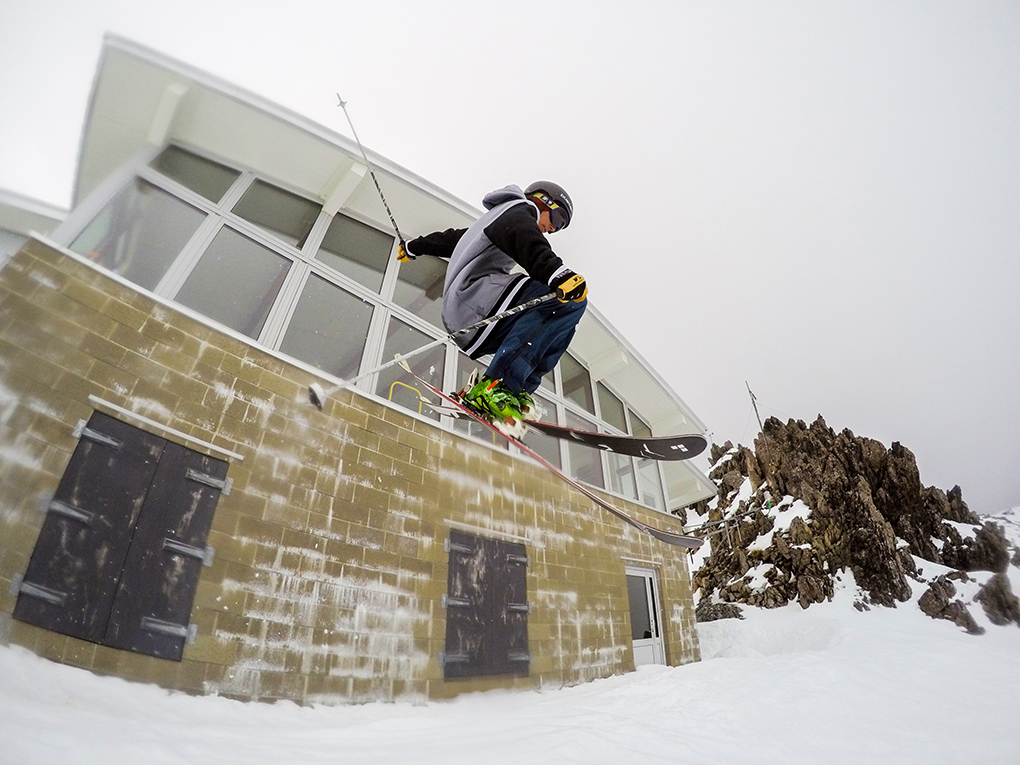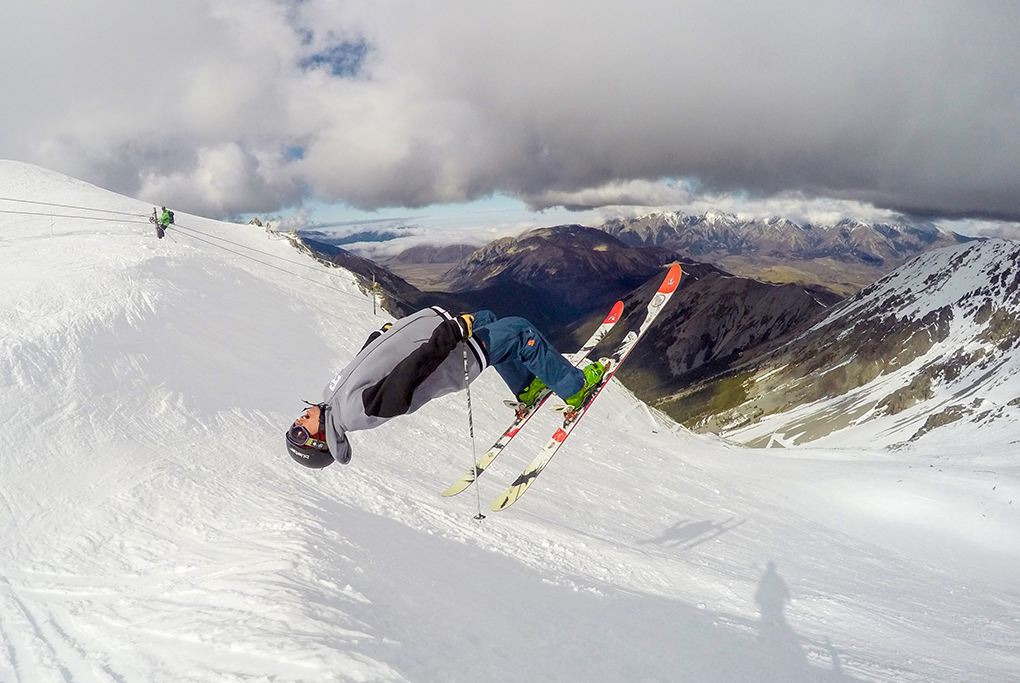
Smith Pivot Helmet
Size Tested: Large (59-63 cm)
Color: Matte Black
Stated Weight: 575 grams
Blister’s Measured Weight (size Medium): 579 grams
Stated Features
- AirEvac 2 ventilation
- Skullcandy audio systems available
- Removable goggle lock
- Bombshell PLUS Construction
- Multi-Impact EPP Liner
- MIPS available in certain colors
- 13 vents
- Self-adjusting lifestyle fit system
Certification: CE EN 1077:2007, ASTM F2040-11
MSRP: $120 USD
Days Tested: 25
Test Locations: Porters, Craigieburn, & Mount Cheeseman, NZ (ski areas & backcountry); Taos Ski Valley & Pajarito Ski Area, NM
Intro
Smith markets the Pivot helmet as combining the smooth contours and styling of their Maze and Holt helmets, but with better venting and adjustability.
Fit and Adjustability
I almost always wear a size Large helmet, whether skiing or mountain biking. My head measures 61 cm in circumference, right within the stated range for the Pivot. However, the Pivot’s fit was not super straightforward for me. The helmet initially felt a little small, which I’ll say more about further down.
Smith simplifies helmet adjustability on the Pivot by including an elastic band on the rear of the liner. Where helmets like the Smith Vantage have an adjustable dial, the elastic band of the Pivot naturally expands to conform to your head size.
When I first put the helmet on, I was very pleased with how comfortable, yet snug, it felt.

Unfortunately, after about two hours of skiing at Porters, that snug fit started to become a painful fit for me, and I was left hoping for more adjustability. (As always, your mileage may vary.)
Another couple of runs later, I removed the ear pads and liner, and put both my beanie and goggles on underneath the Pivot. This is how I wear the helmet to this day, and I find it to be very comfortable when worn in this fashion.
Transitioning to the beanie-underneath style was not hard, but I wouldn’t want to do the process repeatedly. It was easy to unsnap the ear flaps and liner, but re-snapping them into place is a little tricky.
On the other hand, removing or installing the goggle retention clip is very simple. The clip is solid when it’s in place, but you can easily remove/install it by applying pressure to the two clip tabs.
If you typically keep the helmets’ liner and ear pads installed when you ski, I would exercise a little caution if you’re purchasing the Pivot without trying it on. I measure in the middle of the Large size range, and if you are like me, you will likely wish for more adjustability. If you are on the small side of your size range, the elastic adjustment in the liner should work for you.
As I mentioned above, the Pivot felt very comfortable and natural while wearing both a beanie and a pair of goggles underneath (after removing the liner and ear pads). Similar to the Smith Maze and Holt helmets, the Pivot has the contours and styling of a freestyle helmet, so if you are looking for a helmet to lap the park or hike an urban rail, the Pivot fits the bill. And for these purposes, wearing a beanie with or without goggles on underneath the helmet will work out well.

Venting
Venting is the big factor that separates the Pivot from its sibling, the Smith Maze. Where the Maze has two inlet vents and three outlets, the Pivot has a total of 13 vents. (Holding the helmet, there are 11 openings, or vents, in the shell. The impact foam in the front two shell openings clearly has two channels per opening, making 13 total vents.)

All the vents are permanently open and non adjustable. Modulating your temperature would be a bit easier with a helmet with adjustable vents, like the Smith Vantage, but I had no complaints with the Pivot. With a beanie on underneath, this setup has worked great for me. From freezing windy days in New Zealand to sunny ridge hikes at Taos, the Pivot has vented well, without being too airy.
Goggle Integration
I’ve worn the Spy Marshall goggle everyday I’ve worn the Pivot. This goggle/helmet combo has worked well, and I’m sure Smith goggles would integrate even more smoothly with the Pivot.
The most important contributor to goggle integration I’ve found is that the plastic shell extends beyond the impact foam slightly. This is the case with the Pivot; the micro-brim extends about 3/16” past the impact foam, creating a nice awning above most goggles.
Compared to K2 Phase Helmet
I’ve been wearing the K2 Phase for the last three years, and the Smith Pivot has some clear differences from the Phase.
I predominantly wore both helmets with the ear pads removed, however I left a little padding in the rear of the Phase, while I kept the front pads of the Pivot in place.
Both helmets are comfortable for me, but they have a very different fit: the K2 Phase is deeper than the Smith Pivot.
Measured from the top of the ear to the inside of the peak of the helmet the Phase is 4.75” deep, and the Pivot is 4.25”. The overall heights of the helmets are comparable; the Phase is 6.5” tall and the Pivot is about 1/8” taller.
Since the heights are nearly the same and the Pivot is shallower, it sits a little higher on your head. This effect is barely noticeable, but it is there.
The depth of the Phase offers more coverage, but the impact foam of the Pivot is a bit thicker, particularly in the front of the helmet. The foam on the Phase is about .75” thick around the entire circumference of the helmet. The foam on the Pivot is .75” thick on the back and ear area, but the foam is much thicker up front, measuring in at 1.25”. Not all foams are equal, but the added thickness of the Pivot likely enhances safety.
Bottom Line
If you are looking at the Pivot and plan to keep the ear flaps and liner installed, I would make sure to try one on before you buy.
On the other hand, if you are looking for a helmet to throw over your beanie and goggles, lap the terrain park, hike some rails, and cruise all around the mountain in, I’d definitely consider the Pivot. Its vents will keep you comfortable when you’re hiking that rail or up a ridge, and its overall comfort and style will leave you looking good and feeling good, while allowing you to shred more safely.

Damning w/ faint praise. Lousy fit system, padding that needs replacement w a beanie, nonadjustable venting. What?? A $20 skate helmet from a big box store can match this performance, no dissasembly required.
Pretty lazy generalizations there, Mathias. We’ve got a 2nd reviewer in this helmet (different size, different head shape) to see if he’s had a different experience with the fit system. So far, he has. And we’ll be updating / adding to this review. Fit is such a subjective thing, so the point of a decent helmet review is to give some guidelines as to how a given helmet might work / fit for a broad audience, and not just the individual reviewer. Alex did that well in this review, and again, our 2nd reviewer has had a different experience with the fit system.